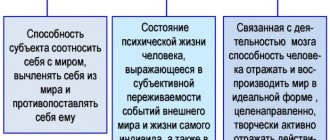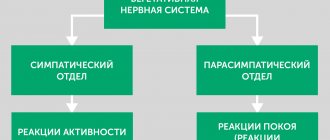To quickly switch from one emotional or mental state to another, you can use many methods: self-control, self-hypnosis, sports or sleep (active and passive discharge), tears, switching or turning off attention, rationalization, situation analysis, auto-training, attitude change, meditation, relaxation and other. And even prayers from the perspective of psychology are a method of self-regulation. This is how they help, because they allow a person to come to consciousness and find a rational solution. What other methods of self-regulation are there? Let's figure it out.
Direct and indirect methods
Direct methods
Direct methods of influencing the psyche include music. Yes, its effectiveness was experimentally proven back in the 19th century by V. M. Bekhterev, although intuitively music has been used for treatment purposes since ancient times.
The second method is libropsychotherapy, or treatment with special literature. Books draw a person into a fictional world, make them experience the emotions of the characters and distract them from their own experiences.
Indirect methods
- Work and sports are the most effective indirect methods. They provide relaxation, charge with positivity and distract from worries.
- Imagotherapy, or role-playing games, is a method of correcting a condition through personal changes. In the process, new character traits are formed, the personality structure and the experience of problems change.
- Suggestion and self-hypnosis. The spoken words are not criticized, but are accepted by default and become a person’s internal attitude, which corrects his activity.
As you may have noticed, these methods do not necessarily relate to self-regulation, but there are methods exclusively for independent use that develop the ability to self-government. For example, autogenic training. You will also learn about this from the article, but a little later.
Methods for eliminating unwanted emotional states
All techniques for regulating emotions can be reduced to three main methods. The first method of self-regulation involves conscious efforts aimed at activating another emotion. The second method is related to the use of attention. The third method involves physical activity to relieve emotional stress.
Currently, many different methods of self-regulation have been developed: relaxation training, autogenic training, desensitization, reactive relaxation, meditation, etc. Private methods of regulating the emotional state (for example, the use of breathing exercises, mental regulation, the use of “defense mechanisms,” changing the direction of consciousness) in mainly fit into three global methods noted by Izard:
- Through another emotion. The first method of regulation involves conscious efforts aimed at activating another emotion opposite to the one that the person is experiencing and wants to eliminate.
- Cognitive regulation. The second method involves using attention and thinking to suppress or gain control over an unwanted emotion. This is a switching of consciousness to events and activities that arouse a person’s interest and positive emotional experiences.
- Motor regulation. The third method involves the use of physical activity as a channel for relieving emotional stress.
Mental regulation is associated either with external influence (another person, music, color, natural landscape) or with self-regulation.
In both cases, the most common is the method developed in 1932 by the German psychiatrist I. Schultz (1966) and called “autogenic training.” Currently, many of its modifications have appeared (Alekseev, 1978; Vyatkin, 1981; Gorbunov, 1976; Marishchuk, Khvoinov, 1969; Chernikova, Dashkevich, 1968, 1971, etc.)
Along with autogenic training, another self-regulation system is known - “ progressive relaxation ” (muscle relaxation). When developing this method, E. Jacobson proceeded from the fact that with many emotions, tension in the skeletal muscles is observed. Hence, in accordance with the James-Lange theory, to relieve emotional tension (anxiety, fear), he suggests relaxing the muscles. This method also corresponds to recommendations to put a smile on your face in case of negative experiences and to activate your sense of humor. Reassessing the significance of an event, relaxing muscles after a person has laughed it off, and normalizing heart function - these are the components of the positive effect of laughter on a person’s emotional state.
A. V. Alekseev created a new technique called “psychoregulatory training,” which differs from autogenic training in that it does not use the instillation of a “feeling of heaviness” in various parts of the body, and also in that it contains not only a calming, but also exciting part. It includes some elements from the methods of E. Jacobson and L. Percival. The psychological basis of this method is the dispassionate concentration of attention on the images and sensations associated with the relaxation of skeletal muscles.
The physiological basis of psychoregulatory training is the fact that the muscular system, due to proprioceptive impulses, is one of the main stimulators of the brain (of the total flow, according to some data, skeletal muscles account for 60%). Therefore, by relaxing the muscles, this tonic effect can be weakened (as evidenced by a decrease in the sensation of electrical stimulation and the response to it, as well as the knee reflex), and by tensing the muscles, this toning can be increased.
True, it should be noted that while even small children can voluntarily tense their muscles, the situation with voluntary muscle relaxation (meaning their relaxation compared to a state of rest) is worse. This ability is difficult to demonstrate by children under the age of 12-13 years. Often the opposite happens: when you try to relax the muscles, they become slightly tense.
Changing the focus of consciousness to regulate emotions.
The options for this method of self-regulation are varied. Disconnection (distraction) consists of the ability to think about anything except emotional circumstances. Switching off requires volitional efforts, with the help of which a person tries to focus attention on the presentation of extraneous objects and situations. Distraction was also used in Russian healing spells as a way to eliminate negative emotions.
Switching is associated with the focus of consciousness on some interesting activity (reading an exciting book, watching a movie, etc.) or on the business side of the upcoming activity. As A. Ts. Puni and F. A. Grebaus write, switching attention from painful thoughts to the business side of even the upcoming activity, understanding difficulties through their analysis, clarifying instructions and tasks, mentally repeating upcoming actions, focusing on the technical details of the task, tactical techniques, and not on the significance of the result, gives a better effect than distraction from the upcoming activity.
Reducing the significance of the upcoming activity or the result obtained is carried out by giving the event less value or generally overestimating the significance of the situation along the lines of “I didn’t really want to”, “the main thing in life is not this, you shouldn’t treat what happened as a disaster”, “failures are already were, and now I treat them differently,” etc.
More on the blog: Psychologist debunks our most popular myths about psychology and psychologists
This is how L. N. Tolstoy describes the use of the last technique by Levin in Anna Karenina: “Even in the first time after returning from Moscow, when Levin flinched and blushed every time, remembering the shame of refusal, he said to himself: “I also blushed and flinched.” I, considering everything lost, when I received a unit for physics and remained in the second year; I also considered myself dead after ruining my sister’s work entrusted to me. And what? Now that the years have passed, I think back and wonder how it could have upset me. It will be the same with this grief. Time will pass, and I will be indifferent to this."
The above method is, in fact, one of the options for using counterfactual thinking (counterfacts). Cognitive psychology has developed the concept of the functional role of counterfactual thinking. Counterfactuals are ideas about an alternative outcome to reality. This is thinking in the subjunctive mood, like “if..., then...” For example, after not very successfully passing an exam, a student thinks: “If I hadn’t sat so much at the computer, I could have passed the exam with a B” or: “If If I didn’t leaf through the textbook yesterday, I wouldn’t have even gotten a C on the exam.”
In the first case, the student constructs an alternative scenario of events that could lead to a better development of events compared to reality. These kinds of counterfactuals are called upward counterfactuals. In the second case, on the contrary, a scenario is built in which the current situation is perceived as relatively good, since it could be worse. This is a counterfactual going down. This is what you need to use to regulate your emotional state.
The following ways can help relieve emotional stress.
- Obtaining additional information that removes the uncertainty of the situation.
- Developing a backup fallback strategy for achieving a goal in case of failure (for example, if I don’t get into this institute, then I’ll go to another one).
- Postponing the achievement of a goal for a time when it is realized that it is impossible to do this with the available knowledge, means, etc.
- Physical relaxation (as I.P. Pavlov said, you need to “drive passion into the muscles”); since during a strong emotional experience the body gives a mobilization reaction for intense muscular work, it needs to be given this work. To do this, you can take a long walk, do some useful physical work, etc. Sometimes such a discharge occurs in a person as if by itself: when extremely excited, he rushes around the room, sorts through things, tears something, etc. A tic (an involuntary contraction of the facial muscles), which occurs in many people at the moment of excitement, is also a reflexive form of motor discharge of emotional stress.
- Listening to music.
- Writing a letter, writing in a diary outlining the situation and the reasons that caused emotional stress. It is recommended to divide the sheet of paper into two columns. On the left should be written down in descending order of significance all the negative consequences of the event. On the right - what can be opposed to what happened, if possible, then positive consequences, including lessons learned. In this way, you can distinguish failure from disaster, trouble from misfortune. This method is more suitable for reserved and secretive people. The use of this analytical method is also possible in the dialogue option, when someone else shows the subject the significance of what happened in a different light (according to the principle “every cloud has a silver lining”).
Use of defense mechanisms. Unwanted emotions can be overcome or reduced by using strategies called defense mechanisms. S. Freud identified several such defenses:
- Escaping is a physical or mental escape from a situation that is too difficult. This is the most common defense mechanism in young children.
- Identification is the process of appropriating the attitudes and views of other people. A person adopts the attitudes of people who are powerful in his eyes and, becoming like them, feels less helpless, which leads to a decrease in anxiety.
- Projection is the attribution of one’s own antisocial thoughts and actions to someone else: “He did it, not me.” Essentially, this is shifting responsibility to someone else.
- Displacement is replacing the real source of anger or fear with someone or something. A typical example of such a defense is indirect physical aggression (taking out evil, annoyance on an object that is not related to the situation that caused these emotions).
- Denial is the refusal to admit that some situation or events occur. The mother refuses to believe that her son was killed in the war, the child, at the death of his beloved pet, pretends that he still lives and sleeps with them at night. This type of protection is more typical for young children.
- Repression is an extreme form of denial, an unconscious act of erasing from memory a frightening or unpleasant event that causes anxiety and negative experiences.
- Regression is a return to more ontogenetically earlier, primitive forms of response to an emotiogenic situation.
- Reactive education is behavior that is opposite to existing thoughts and desires that cause anxiety, with the aim of masking them. Characteristic of more mature children, as well as adults. For example, wanting to hide his love, a person will show unfriendliness towards the object of his adoration, and teenagers will also show aggressiveness.
Also on the blog: 10 free tips for which people pay psychologists a lot of money
Persistent attempts to influence a very excited person to regulate his emotions with the help of persuasion, persuasion, suggestion, as a rule, are not successful due to the fact that from all the information that is communicated to the worried person, he selects, perceives and takes into account only what corresponds to his emotional state. Moreover, an emotionally excited person may be offended, thinking that he is not understood. It is better to let such a person speak out and even cry. “ A tear always washes away something and brings consolation ,” wrote V. Hugo.
The use of breathing exercises to regulate the state , according to V. L. Marischuk (1967), R. Demeter (1969), O. A. Chernikova (1980) and other psychologists and physiologists, is the most accessible way to regulate emotional arousal. Various methods are used. R. Demeter used breathing using a pause:
- without pause: normal breathing - inhale, exhale;
- pause after inhalation: inhale, pause (two seconds), exhale;
- pause after exhalation: inhale, exhale, pause;
- pause after inhalation and exhalation: inhale, pause, exhale, pause;
- half inhale, pause, half inhale and exhale;
- inhale, half exhale, pause, half exhale;
- half inhale, pause, half inhale, half exhale, pause, half exhale.
In addition, the author recommends alternating (four times) breathing through the nose and mouth according to the following scheme:
- inhale through the nose - exhale through the nose;
- inhale through the nose - exhale through the mouth;
- inhale through the mouth - exhale through the mouth;
- inhale through the mouth - exhale through the nose.
R. Demeter recommends using these methods to calm down before bed and to reduce pre-start excitement.
G. D. Gorbunov recommends using three types of exercises to regulate emotions: full abdominal breathing and two types of rhythmic breathing.
When performing the first exercise, inhale through the nose.
- Initially, with slightly lowered and relaxed shoulders, the lower parts of the lungs are filled with air, while the stomach protrudes more and more. Then, with an inhalation, the chest, shoulders and collarbones rise sequentially. A complete exhalation is performed in the same sequence: the stomach is gradually drawn in, the chest, shoulders and collarbones are lowered.
- The second exercise consists of full breathing, carried out at a certain rhythm (best at a walking pace): a full breath for four, six or eight steps. This is followed by a breath hold equal to half the steps taken during inhalation. A full exhalation is done again in the same number of steps (four, six, eight). After exhalation, the breath is held again for the same duration (two, three, four steps) or, in case of unpleasant sensations, slightly shorter. The number of repetitions is determined by how you feel.
- The third exercise differs from the second only in the conditions of exhalation: it is done with pushes through tightly compressed lips. The effect may be small at first. As the exercises are repeated, the positive effect increases, but they should not be overused.
Canadian scientist L. Percival proposed using breathing exercises in combination with muscle tension and relaxation. By holding your breath against the background of muscle tension, and then calmly exhaling, accompanied by muscle relaxation, you can relieve excessive anxiety.
Individual characteristics of the regulation of emotional state. F.P. Kosmolinsky (1976) and A.K. Popov (1963) identified two types of people, depending on the severity of self-control of the pre-launch state. The first type with a high level of self-control did not show that vegetative indicators (galvanic skin response, heart rate, respiration) exceeded the upper limits of the physiological norm. Their quality of completing tasks did not decrease.
The second type with a low level of self-control was distinguished by neuro-emotional tension, which was externally expressed in mental agitation or, conversely, in depression, expressed in the desire to “curtail” preparation for activity. This was accompanied by vegetative changes: tachycardia, hyperhidrosis, spontaneous fluctuations in the galvanic skin response, and sleep disturbance.
Author: Evgeniy Pavlovich Ilyin, Doctor of Psychology, Professor, Russian State Pedagogical University named after. A.I. Herzen.
Source
Read us in a convenient Telegram | Facebook | Instagram | Tags
Psychotechnicians for behavior correction tasks
Decreased arousal
Effectively use:
- distraction and switching of attention;
- goal setting (consider different options);
- physical relaxation;
- psychomuscular and autogenic training;
- breathing exercises for relaxation.
Resource Activation
Effectively use:
- autogenic training for mobilization;
- increased motivation;
- breathing exercises for activity;
- plot performances;
- memories of active emotional states and the situations that caused them;
- mental and sensory stimulation;
- heterosuggestion.
Mental desensitization
Effective:
- presentation of successful behavior;
- self-hypnosis of confidence and neutral attitude towards harmful factors;
- deliberate passive attitude.
Relieving Emotional Stress
Effective:
- listening to music;
- relaxation;
- substitution;
- rationalization;
- fantasy.
Recuperation
Effective:
- meditation;
- suggested dream;
- self-hypnosis for quick recovery.
Regulation of the autonomic system
Effective:
- auto-training;
- heteroregulation;
- breathing exercises.
Autogenic training
The method was developed in 1930 by the German psychotherapist I. G. Schultz. In Russia, the method has been used and studied since 1950.
At first, auto-training was used only for the treatment of nervous disorders, but gradually began to be used for preventive purposes. Today this is a popular method of unloading the emotional and mental state in all areas and activities: study, work, relationships, and so on.
Auto-training in the modern sense even has its own subtypes:
- psychomuscular training (PMT);
- psychotonic training (PTT);
- psychoregulatory training (PRT).
But the basis of any auto-training is a relaxation mechanism, that is:
- mastering muscle relaxation techniques;
- development of skills for sensing heat and cold in the body;
- increasing concentration and volitional attitude towards the general condition of the body.
The purpose of auto-training is to relieve muscle and emotional tension, to instill in a relaxed state the development of volition.
I suggest you get acquainted with morning auto-training, which will charge you with energy and positivity for the whole day. You can perform it at any time, even immediately after waking up, while lying in bed. You just need to say the following words (installations). It is very important to speak on your own behalf in the present tense.
The text can be saved and printed as a reminder
Control of emotions is
Emotions out of bounds
normal manifestations, no longer serve for the benefit of a person, they provoke illnesses (including mental ones), spoil relationships with others, complicate self-realization in various spheres of life, change personality (a person becomes impulsive, irritable, aggressive, etc.).
Excessively prolonged and intense emotions, especially negative ones, can make a person unhappy and significantly ruin their life.
It is known, for example, that in a state of passion an individual can even commit a crime. Emotions are difficult
, and such extreme forms of intensity and inhibition of all other mental processes as affects are generally impossible.
The stronger the emotion, the more effort it will take to curb it. Therefore, it is much easier not to bring
the emotion to a state of excessive and too long, to learn to control yourself.
No matter how difficult it may be, a huge number of people still know how to regulate their emotional state. Actors, politicians, lawyers, military men do this masterfully - many people know how to control themselves.
Control your emotions
this is not the same as suppressing them or ignoring them!
Controlling emotions means
:
- the ability to be aware
, that is, to catch oneself thinking about the occurrence of emotions and to understand the specific name of a particular emotion being experienced, - the ability to accept
both good and bad emotions and
understand
their functional significance, necessity for the body and personality, - the ability to manage them, that is, to maintain normal
intensity and duration of experiences.
Control over emotions
this is managing them to the extent possible when they have already arisen, as well as the ability to prevent the unwanted development of strong, excessive, dangerous emotions.
Self-hypnosis
In fact, the technique described above is self-suggestion. With the help of these words, your faith in your own strength and the implementation of your plans increases. You get set up for success and understand that everything depends only on you.
Self-hypnosis is always positive statements in the first person, spoken in the present tense. You can come up with your own up-to-date and customized settings. Self-hypnosis directly affects the psychophysiology of the brain, forces it to concentrate on the goal.
There are several principles for constructing phrases. You are addressing the subconscious, so it is imperative to follow them.
- Use positive and affirmative phrases and avoid “not” and “never”. For example, instead of “my head doesn’t hurt,” say “the pain has left my head.”
- Maximum specificity. Don't skimp on your words and sentences. Break a big goal into small ones. For example, “I am successful” is a common phrase. Decipher what this means in your mind.
- Try to replace abstractions. For example, not “the head has passed,” but “the forehead has cooled.”
- Do not complicate the wording, use simple words, most importantly, understandable to you.
- One phrase – maximum 4 words.
- Always only the present tense. The subconscious perceives this as already accomplished, and what is said actually happens.
What is self-regulation
Let us take a closer look at the concept of “self-regulation” in psychology and pedagogy.
In psychology
Self-regulation means assessing the situation and adjusting one’s own activity directly by the individual. As a result, the results of the action are adjusted. There is voluntary and involuntary self-regulation.
Voluntary form is characterized by conscious control of behavior in order to achieve the desired. With the help of conscious self-regulation, a person develops individuality. Involuntary is more aimed at survival and self-preservation - subconscious defense mechanisms are triggered.
The norm is considered to be a situation where self-regulation is formed and develops in parallel with personal maturation. If there is no personal development, a person does not learn to bear responsibility, then the situation worsens. The development of self-regulation is impossible without personal growth.
In adulthood, self-regulation helps subordinate emotions to intellect, but in old age the balance shifts again towards emotions.
Aspects influencing self-regulation
:
- external environmental conditions;
- personality traits;
- features of the relationship between the individual and the environment;
- goals of activity.
Simply put, self-regulation is socially acceptable methods of dealing with feelings and emotions, as well as accepting norms of behavior, respect for others, and adequate reactions.
Meditation
Meditation involves working with attention: relaxing it or, conversely, increasing concentration. The purpose of meditation is to relieve emotional stress and develop the ability to stop the flow of thoughts.
Focus on the score
Count slowly from 1 to 10, concentrating on each number. You shouldn't think about anything else. If you realize that your thoughts have again “fled away” into your problems, then start counting from the beginning. Count like this for a few minutes (without losing your way).
Focusing on emotions and mood
- Record your inner thoughts, inner speech.
- Stop her.
- Catch your mood and focus on it.
- Rate it: good, bad, sad, happy, average, upbeat.
- Now focus on your emotions. Imagine yourself in an elevated, joyful state. To do this, remember a joyful event in life, a pleasant image.
- Get out of the state of relaxation.
- Go through reflection, that is, evaluate your state and thoughts now and during the exercise.
Emotional Regulation Questionnaire
There are several useful tools to help you assess your ability to regulate emotions. Below is one of the most popular.
Emotional Regulation Questionnaire
This questionnaire (The Emotion Regulation Questionnaire, EQR) is the most popular emotion regulation scale among American psychologists. It was developed in 2003 by James Gros and John Oliver based on preliminary research.
The questionnaire consists of 10 questions, the answers to which are given on a scale from 1 (strongly disagree) to 7 (strongly agree). There are two facets that the scale covers: the cognitive reappraisal phase and the expressive suppression phase.
The six questions that make up cognitive reappraisal are as follows:
- When I want to experience positive emotions, I change the way I think.
- When I want to stop experiencing negative emotions, I change the way I think.
- When I'm faced with a stressful situation, I force myself to think about it in a way that helps me stay calm.
- When I want to feel a more positive emotion, I change my opinion about the situation.
- I control my emotions by changing the way I think about a situation.
- When I want to feel less negative emotions, I change my mind about the situation.
The four questions that make up the expression suppression facet are:
- I keep my emotions to myself.
- When I feel positive emotions, I try not to express them.
- I control my emotions without expressing them.
- When I feel negative emotions, I don't want to express them.
If you want to know more about this test, go here (English, PDF file).
Trainings
Perhaps the most popular psychological technique today. There are many trainers and people willing to undergo training. Trainings are divided into separate profiles covering narrow topics. For example, training to improve stress resistance is popular. Most often they are directed:
- to increase self-esteem (or decrease to the correct level if necessary), emotional stability, self-confidence;
- formation of motivation to achieve success and behavior strategies under stress.
Food for thought: “Aggression”
Aggression (from the Latin aggressio - attack) is the destructive actions, behavior, emotions and feelings of a person, causing him and (or) others psychological discomfort, and in some cases, physical harm.
According to the place of manifestation (in the external behavior of a person or in the inner world of a person), aggression is divided into two types:
• external – words, actions, human behavior; • internal - negative emotions, feelings and thoughts that are either not reflected in behavior or are manifested indirectly (for example, in facial expressions, gestures).
By direction, aggression is also divided into two types:
• aggression directed against others; • aggression directed at oneself (auto-aggression).
The combination of two criteria allows us to distinguish four types of aggression (see figure).
Breathing exercises
There are many options for breathing techniques, but it is a mistake to believe that they are all aimed at slowing down mental reactions. On the contrary, there are exercises that activate the brain.
Relaxation exercises
The goal is to master conscious natural breathing, relieve muscle tension and tension, and calm emotions. I want to introduce you to some exercises.
"Rest"
Place your feet shoulder-width apart, straighten up, and inhale. As you exhale, bend down, relax your neck and shoulders (as if they were hanging calmly on their own). Stay in this position for 1-2 minutes. Breathe deeply, watch your breathing. Slowly straighten up.
"Conscious Breathing"
Sit comfortably and relax, but keep your back straight. Take your first shallow breath in and out. Then inhale and exhale a second time, but deeper. And for the third time, inhale with your whole chest, but exhale very slowly (one in three).
"Breathing under stress"
Breathing is rhythmic and combined with walking. The scheme is as follows: two steps - inhale, two steps - exhale. Gradually increase the duration of exhalation, that is, then it will be: two steps - inhale, three steps - exhale, and so on.
Arousal exercises
The purpose of the following exercises is to increase neuropsychic activity and activate resources.
"Lock"
Sit up straight, place your hands on your knees and clasp them together. Inhale and at the same time raise your arms up (palms facing up). Hold your breath for a couple of seconds, exhale sharply through your mouth and “drop” your hands on your knees.
"Getting ready for work"
You need to breathe according to a certain pattern described below. The first number is inhalation, the second (in brackets) is retention, the third is exhalation.
2(2)+2; 4(2)+4; 4(2)+5; 4(2)+6; 4(2)+7; 4(2)+8; 8(2)+5; 9(4)+5; 10(5)+5.
Strategies for Emotional Regulation
It's time to introduce you to emotional regulation strategies. Remember, the most important thing is to practice them as often as possible so that they become a habit.
1
Understanding and labeling emotions
One of the most powerful tools in regulating emotions is simply identifying and finding their names.
First, you need to understand the difference between primary and secondary emotions:
Primary Emotions : The initial reaction to an event or stressors in your environment.
Secondary Emotions : A reaction to your primary emotions or thoughts.
Primary emotions are often completely natural reactions to events around us. For example, sadness from a breakup or anger during a conflict. However, secondary ones are more dangerous, although they can be learned to control. You can decide for yourself how to feel a day or a week after the breakup.
Secondary emotions can push us to destructive and inappropriate behavioral actions - this makes it imperative to understand our primary emotions.
Learning to understand, recognize and label emotions is an extremely useful skill that will lay the foundation for managing your feelings.
2
The ability to let go of painful emotions
This is one of the most important skills in emotional regulation - the ability to let go of unpleasant and painful feelings.
A person tends to get stuck in negativity while analyzing what happened. Instead of simply letting go of such emotions, he asks himself destructive questions like “Why did this happen to me?”
The first step to take is to accept that we are suffering. Then you need to see that in reality everything is not so scary.
To learn to let go of negative emotions, do the following:
- Watch your emotions. Recognize that they exist, step away from them.
- Try to imagine your emotions as a wave that you are going through. Do this just once, don't get stuck and overcome yourself over and over again.
- You are not your emotions. They are part of, but do not completely form, the personality.
- Remember that having emotions doesn't mean you have to act. You can simply sit and do nothing.
3
STOP
If you need a clear and understandable method for controlling your emotions, try the STOPP technique.
STOPP is a technique that will help in the most difficult situations, when emotions are raging inside. It includes aspects of cognitive behavioral therapy and mindfulness meditation. You can manage your emotional reactions even in the most intense conflict.
STOP means:
- Stop! (S, Stop). Pause for a second.
- Pay attention to your breathing - how you inhale and exhale.
- What thoughts are in your head right now?
- What's the big picture?
- What's the best thing to do right now?
If you can only learn one skill to help you regulate your emotions more effectively, this is it. The ability to pause in moments of extreme irritation will help you take giant steps in mastering the art of emotional regulation.
4
Ability to distinguish between positive and negative strategies
There are many ways to regulate your emotions, channel them in the right direction and maintain a positive mood. Perhaps you use techniques that, although they allow you to maintain emotional balance, but upon careful examination turn out to be destructive.
Healthy activities and strategies that help you regulate your emotions include:
- walks with friends;
- physical exercise;
- keeping a diary;
- meditation;
- getting enough sleep;
- periodic rest.
Such strategies are good because they not only help you better manage your emotions, but also do not cause you any harm.
Unhealthy actions that, although they help cope with emotions, are actually destructive:
- alcohol and smoking;
- avoiding difficult situations;
- physical or verbal aggression;
- excessive passion for life on social networks.
Remember that such actions help you feel better at first (in terms of managing emotions), but cause long-term irreparable damage.
Did you like the article? Join our communities on social networks or our Telegram channel and don’t miss the release of new useful materials: TelegramVKontakteFacebook
We also recommend reading:
- Storytelling
- Self-control: what it is and how to develop it
- Ways to Develop Emotional Mastery
- Emotions and health: how they are interconnected
- Cognitive restructuring
- How to Achieve Emotional Maturity
- Mindfulness and its benefits
- How to express your emotions without becoming a manipulator
- Cognitive reframing
- 5 Signs You're a Slave to Your Emotions
- Social anxiety
Key words:1Psychoregulation
Relaxation
The goal is to realize, find and relieve muscle tension; learn muscle control.
"Tension-relaxation"
Stand up straight, focus on your right arm and tense it. After a few seconds, release the tension. Do the same with your left hand, then with both at the same time. After - with the right leg, left leg, both legs, lower back, neck.
"Muscle Energy"
- Bend your right index finger as much as possible (without damaging it).
- Feel where the tension goes. The finger itself, the hand, the elbow, the neck?
- Now try to gradually ease the tension: in the neck, shoulder, elbow. But the finger is still bent and tense.
- Release tension from your other fingers. We don't touch the index finger.
- Managed? Release the tension from your index finger.
- Do the same with your left leg (press your heel into the floor, do not overdo it).
- Where does the tension go? Gradually relax, as in the case of a finger.
- After this, tense your back. I will make a reservation that this exercise is not suitable for people with a bad back (hernia, osteochondrosis). If your back is healthy, then bend over and imagine that a box is placed on your back.
- Where does the tension go? Gradually relax your entire body, last but not least your back.
What is an emotion
You can’t manage your emotions well without understanding how they work. Let's take a closer look at what emotions are and what they depend on.
If you show curiosity and turn to Wikipedia, even there it will be written “Emotions, like many other mental phenomena, have been poorly studied and are understood differently by different authors, so the definition can be considered neither accurate nor generally accepted.”
Despite this uncertainty, emotions and emotion control have been studied to the extent that they can be separated from feelings and moods.
Emotions are entirely centered within us and are based on our internal state regarding ourselves. I'm scared - it's an emotion. Feelings are based on a reaction caused by an external factor. I'm afraid of this dog - this is a feeling.
Comparing emotions and moods, we can highlight their main difference – transience. A mood can last for days, while emotions can change each other every second.
Involuntary visualization
The goal is distraction from stressful situations and obsessive thoughts by means of involuntary attention against the background of relaxation.
- Close your eyes and look as if at the back of your eyelids. In a couple of minutes you will see dots, spots, lines.
- After some time, these spots may begin to form into some images, faces, objects.
- It is important to do this in a state of relaxation, then gradually obsessive thoughts will come out through these barely noticeable images.
- Keep your face and body relaxed. Don’t try to draw something yourself, but just look, as if from the outside, at what appears.
- This exercise requires skill. During the first practices, attention often slips; you need to consciously return it to the points.
- Then open your eyelids and assess your condition.
"Anchoring" method
A self-regulation technique associated with conditioned reflexes, that is, the “stimulus-reinforcement” scheme. Surely it has happened to you that a song or smell evoked specific memories and emotions. This is your “anchor”, which can be positive or negative. Someone's voice or gesture can also be an anchor.
Self-regulation in the form of anchoring involves the conscious setting of “anchors” and their reasonable use, that is, the release of the necessary resource in a stressful situation.
- Identify a situation in which you need resources.
- Determine specifically what resource is needed (confidence, courage, determination, etc.).
- Ask yourself: “If I had this resource now, would I really use it?” If the answer is yes, then you made the right choice and you can move on. If you make a mistake, then select a new resource.
- Remember a situation when you had this resource.
- Choose three “anchors”: what you hear, what you feel, what you see.
- Change your position in space, reproduce in your memory the situation when you had the resource, achieve a peak state.
- Exit it and return to your original place.
- Recreate the situation again and attach three “anchors”. Hold them as long as needed.
- Check the success of the operation: “turn on the anchors”. Are you getting into the desired state? If yes, then everything is fine. If not, repeat the previous point.
- Determine the signal that will hint to you in a difficult situation that it is time to “drop anchor.”
- If necessary, immediately create a complex of evoked states, emotions, and feelings.
Exercise “Self-regulation of attitude towards another person”
1. Remember and write down a situation that causes you negative emotions and feelings towards another person__________
2. Give a name to the emotions (feelings) you are experiencing about this situation at the moment________________________
3. Become aware of and write down what happens to your breathing when you think about this situation_________________________________
If necessary, normalize your breathing: slow it down, make it deep and rhythmic, lengthen the exhalation phase.
4. Be aware of the location of discomfort in the body. Write down where you feel tension, pain, or decreased muscle tone (lethargy, etc.) when you think about the situation. Normalize your muscle tone using the techniques learned _________________
5. Analyze and write down what your expectations regarding this situation were not met, what human value is most important to you in this situation (for a list of values, see lesson 1), what type of subjective control you showed in this situation (for a classification of types of subjective control, see in lesson 2).
For example, let's analyze the following situation: your friend was late for a meeting with you, and you expressed your dissatisfaction to him in a categorical form. You probably expected your friend to arrive on time for the meeting. If so, then punctuality is an important human value for you. Since you blamed your friend for being late, you exhibited the “blaming others” type of subjective management.
6. Take responsibility for your expectations: realize that they are a product of your thinking, that is, you created them yourself, which means you can change them. Anticipate and write down what you need to change in your expectations to prevent you from becoming uncomfortable._________________________________________________
7. Imagine yourself in the place of another person in the situation you described and try to understand what kind of behavior he expected from you, what his expectations were not met, what values are significant for him, what type of subjective control he showed in this situation.
8. Write down the motives for the other person's actions that could explain (ideally, justify) his behavior. ___________________________________________
9. Recognize and write down the emotions you are experiencing towards the other person at the moment (if these emotions are negative, then go back and do steps 5-8). ___________________________________________
10. Think over and write down your desired behavior options in a similar situation in the future:
My actions to prevent such situations: ___________________________________________
My actions to change the situation if I find myself in it: __________________________________________ My actions to change my attitude towards the situation if it is impossible to prevent or correct it: __________________________________________
Commentary on the exercise. When performing the exercise, you used the technique of self-regulation of your attitude towards another person. (Appendix “Techniques for Self-Development”). This technique can be effectively used in cases where you experience an uncomfortable state associated with unjustified expectations in relation to another person. This technique is a necessary condition for constructive interaction with other people: in an aggressive state, it is impossible to convey your thoughts to your interlocutor, since he, first of all, reacts to your state and does not think about your words.
So, you have become acquainted with the technique of self-regulation of your attitude towards another person. If you have difficulty finding motives that justify the behavior of another person, then you probably have inflated demands on certain values that are significant to you (they have become super-values for you). Psychological practice shows that a demanding person very often has high demands not only for others, but also for himself, and therefore, internal aggression towards himself is likely for him.
Mastering the steps of self-regulation of your expectations regarding significant values and neutralizing internal aggression towards yourself will help you realize your super values and remove them from the pedestal. Get acquainted with the technique of self-regulation of your attitude towards yourself by completing the following exercise:
Afterword
Self-regulation really works. The body and brain are one, as psychosomatics has long shown. Therefore, you should not be skeptical about exercises that seem to have little to do with psychology.
But you need to approach the development of self-regulation carefully and following a number of rules:
- clearly see the goal and stick to it;
- the process of developing a skill must be consistent and purposeful;
- be prepared for high energy costs, especially at the beginning of the journey;
- despite consistency and purposefulness, adhere to diversity in the development of self-regulation methods.
It is impossible to create one set of self-regulation methods for a lifetime, since the very ability to self-government is associated with such changeable elements as needs, personality and character traits, motives, and more. You can read more about the intricacies of developing self-regulation and what it is in the article “Self-regulation - what is it in psychology. Concept, types and functions."
The techniques presented in the article were borrowed from the book by T. G. Volkova “Workshop on the psychology of self-awareness and self-regulation: methodological materials for the course.” You can find this literature and learn more about other techniques and methods of self-regulation.
Feelings and emotions in culture
Western mass culture is thoroughly saturated with an atmosphere of emotional dictatorship, the power of feelings over the human will. In films, we constantly see how heroes, driven by passionate impulses, commit some crazy actions, and sometimes the entire plot is built on this. Movie characters quarrel, lose their tempers, get angry, shout at each other, sometimes even for no particular reason. Some uncontrollable whim often leads them to their goal, to their dream: be it a thirst for revenge, envy or a desire to have power. Of course, films are not entirely made up of this, I am not at all going to criticize them for this, because it is simply an echo of the culture, which is that emotions are often placed at the forefront.
This is especially evident in classical literature (and even classical music, not to mention the theater): past centuries were much more romantic than our era. The heroes of classical works were distinguished by their great emotional character: they fell in love, then they stopped loving, then they hated, then they wanted to rule.
And so, between these emotional extremes, the stage of the hero’s life described in the novels passed. I will also not criticize the great classic books for this, they are wonderful works from the point of view of artistic value and they simply reflect the culture from which they were born.
But, nevertheless, this view of things, which we see in many works of world culture, is not only a consequence of the social worldview, but also indicates the further path of cultural movement. Such an exalted, obsequious attitude towards human emotions in books, music and films creates the belief that our feelings are not controlled, they are something that is beyond our control, they determine our behavior and our character, they are given to us by nature and we do not we can change nothing.
We believe that the entire individuality of a person comes down to just a set of passions, quirks, vices, complexes, fears and emotional impulses. We are used to thinking about ourselves in this manner: “I’m hot-tempered, I’m greedy, I’m shy, I’m nervous and I can’t help it.”
We constantly look for justification for our actions in our feelings, abdicating all responsibility: “well, I acted on emotions; when I am irritated, I become uncontrollable; Well, that’s the kind of person I am, I can’t do anything about it, it’s in my blood, etc.” We treat our emotional world as an element beyond our control, a seething ocean of passions in which a storm will begin as soon as a slight breeze blows (after all, the same thing happens in the case of heroes of books and films). We easily follow the lead of our feelings, because we are who we are and it cannot be any other way.
Of course, we began to see this as the norm, even, moreover, as dignity and virtue! We call excessive sensitivity and think of it almost as a personal merit of the bearer of such a “spiritual type”! We reduce the entire concept of great artistic skill to the level of depicting the movement of emotions, which is expressed in theatrical poses, elaborate gestures and demonstrations of mental torment.
We no longer believe that it is possible to gain control over ourselves, make conscious decisions, and not be a puppet of our desires and passions. Is there any serious basis for such a belief?
I think not. The inability to control feelings is a common myth generated by our culture and our psychology. It is possible to control emotions, and the experience of many people who have learned to be in harmony with their inner world speaks in favor of this; they managed to make feelings their allies, and not overlords.
This article will talk about managing emotions. But I will talk not only about the control of emotions, such as anger, irritation, but also about the control of states (laziness, boredom) and uncontrollable physical needs (lust, gluttony). Because it all has a common basis. Therefore, if I further talk about emotions or feelings, by this I immediately mean all irrational human impulses, and not just the emotions themselves in the strict sense of the word.











